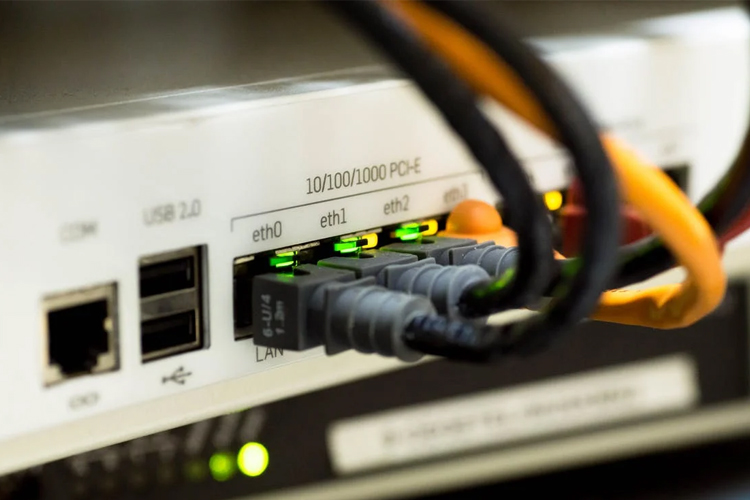We rely on a WiFi connection for so much from communication and entertainment to smart device support and wider business applications. How, then, can you choose a suitable internet provider?
30 October, 2024 | Posted by:
Category: Business Internet, Cable, Entertainment, Deals & Packages, Internet, Service Providers, Streaming, Technology | No Comments

Internet access is something we take for granted these days. We rely on a WiFi connection for so much from communication and entertainment to smart device support and wider business applications.
How, then, can you choose a suitable internet provider?
Luckily, finding the best internet providers is straightforward if you adopt a logical approach. Follow the steps we outline today and you’ll easily unearth great internet packages tailored to your requirements.
Whether you need an internet connection for your home or business premises, your first job is to check that the package you want is available in your area.
You could find that even some of the services from leading providers doesn’t give you the speed and reliability you need where you live. This becomes even more of an issue in rural areas.
Starting your decision off based on performance by location is a great way to whittle down your options before you get started thinking about those all-important metrics…
The first thing we would say about speed is that you do not need to obsess over speeds if you’re a casual single user.
How about if your household has teens constantly downloading, someone working from home, streaming services and smart devices competing for bandwidth? Well, you’d be well advised to consider a fiber connection if this is possible where you live.
When it comes to speed, you should investigate whether these claimed speeds are delivered. You should extend your research to include overall uptime and reliability. Reading honest user feedback is a great way to gauge the real-life performance of internet providers.
Once you’ve established that the package you want is available locally and gives you speed adequate for your needs, take a moment to consider download limits.
Again, the relevance of this will depend entirely on your online habits. You should also explore the difference in price between plans with data caps and unlimited data alternatives.
If your kids are constantly downloading media, you spend a lot of time streaming, and you don’t want to be constantly monitoring limits, go for an uncapped package. You won’t regret it.
Now, you might now have found an internet package in line with your needs but what about if things go wrong?
Given the volatility of internet connectivity, it makes sense to do business with a company boasting a solid reputation for customer service. As with your other areas of research, scouring user reviews is a great way to begin assessing how the provider performs when help is required.
So, once you’ve got this ironed out, there’s one more all-important element to consider: price.
Price plays a significant role in any buying decision and it’s no different when you’re shopping internet providers. The cost is doubly relevant since the expense will be ongoing rather than a one-off investment.
That said, you should focus on finding a package that’s priced within budget but still delivers everything you need. It’s pointless compromising yourself for the sake of a few bucks.
As well as pricing, it also pays to think about contract length. Are you forced to commit to a certain time period? If so, are there penalty fees for early termination? Make sure you’re completely happy with any agreement before you sign and lock yourself in.
Get all these factors nailed and you’ll soon discover that finding a great internet provider really isn’t that hard.
Fast and reliable connectivity underpins many modern smart homes and you’ll get the robust WiFi you need to keep all that tech running smoothly.
22 October, 2024 | Posted by:
Category: Cable, Entertainment, Deals & Packages, Internet, Service Providers, Streaming, Technology | No Comments

If you think about your media consumption, chances are your habits have changed dramatically over the past couple of decades.
Firstly, chances are you’ll demand internet access at home. According to Pew Research Center, 90% of adult Americans now use the internet. The same study shows almost 75% of US households have a broadband connection.
Fast and reliable connectivity underpins many modern smart homes and you’ll get the robust WiFi you need to keep all that tech running smoothly.
A brisk internet connection is also vital if you want to use streaming services in place of cable TV.
As an added complication when you’re shopping for services at home, you have the phone to consider.
Most of the principal internet providers give you the chance to take care of all your communication and entertainment needs with the best home internet deals.
With triple-play packages, you will get:
Internet
TV
Phone Service
As with any comprehensive package like this, you’ll qualify for a discount and you should get unlimited nationwide calls as standard. Essentially, bundling your services can save you time and money if you get it right.
We would suggest you think closely before launching into any commitment like this. You should also start by carefully analyzing your needs.
To give you some inspiration, we’ll briefly highlight the benefits of three leading internet bundles so you can see if any would make a good fit.
If you prioritize a wide choice of TV viewing, AT&T serve up 550 channels so there’s something for all the family.
Monthly prices come in anywhere from $55 to $230 depending on the contents of the chosen bundle.
Opt for the DIRECTV package and you’ll get an HD DVR from Genie thrown in along with hundreds of channels. When combined with AT&T internet, you’ve got a powerful combination. Alternatively, sign up for fiber TV bundles offering enormous choice and great reliability.
AT&T Fiber promises gigabit-speed internet. Speeds of the standard packages are still fairly brisk. Throw in class-leading TV content and all you need to do is choose your bundle.
For anyone prizing high internet speed above all else, Verizon Fios Home Internet promises some of the quickest speeds nationwide.
With download speeds from 100 to 940 Mbps and fairly impressive upload speeds, Verizon internet should satisfy a large family of heavy users.
Bundles including internet and TV range from $89.99 per month to $169.99 monthly. With Fios TV, you get 125 to 425+ channels so you’ll never get caught short.
The only real drawback of this exclusively fiber network is an ambiguous policy concerning data caps. We’d suggest speaking to the customer service representative to make sure you’re getting the package you need without the risk of your speeds being throttled for excessive usage.
To round out, one of the best all-rounders for internet bundles is Xfinity, the largest cable TV and internet provider.
With swift speeds to 275 Mbps and over 250 TV channels, you don’t get a huge choice of packages but the three options are all effective and come in from $119.99 monthly to $159.99 monthly for TV and internet combined.
You should use these ideas as a starting point if you’re struggling to find internet bundles then focus on the best options in your area.
Focus on location first then double down on what you need included and what you feel is most important, whether that’s internet speed, channel selection, or ease of cancellation. With those elements dialed in, you should easily find a package catering for all your requirements.
With average cable bills coming in at $85 a month, and most satellite TV providers charging $100 a month, it’s only natural to seek out savings in this area.
09 May, 2024 | Posted by:
Category: Cable, Entertainment, Deals & Packages, Internet, Service Providers, Streaming, Technology | No Comments
With average cable bills coming in at $85 a month, and most satellite TV providers charging $100 a month, it’s only natural to seek out savings in this area.
When you throw in the cost of internet, there’s even more reason to get the best possible deal for both services.
We’ll kick off today by showing you how you can cut back on internet expenditure before exploring how to save money on cable.
TLDR: Bundle your TV and internet for the best possible deal.
1. Threaten to Leave
2. Consider a Lower Speed Plan
3. Buy Your Own Modem
4. Switch Providers
5. Constantly Monitor Local Deals
If you’re unhappy with the amount you’re paying for your internet, do you feel you could get a better deal elsewhere?
Before anything else, call your internet provider and explain your situation. In the vast majority of cases, if you express your intention to leave, the company representative will offer some form of incentive to stay.
This strategy is a win-win. Even if you don’t get any discount, you are not committed to leaving. You’ve got nothing to lose by asking.
Now, downgrading to a lower speed plan is a surefire way to save money with most providers. The question is, will that negatively impact your day-to-day use?
If you have teens in the house downloading and online gaming, or you work from home, this will not be a viable way to save money. You need that extra speed.
For lighter users, downgrading to a 3 Mbps package could generate savings of close to $200 a year.
Check to see if your internet provider charges you a monthly fee for modem rental. If so, buy your own modem instead. You’ll recoup the cost quickly and then save on ongoing costs.
If the threat of leaving you made earlier didn’t work and you have found a superior deal, switch providers. You’ll often benefit from an attractive introductory rate for the first year.
Many consumers switch providers every year or so to benefit from this, although we wouldn’t recommend that strategy. It’s much trouble for too little reward.
If you feel you could get better value elsewhere, vote with your feet.
To find internet providers in your area, you need to do little more than monitor the websites of the major ISPs to see whether they operate in your state of residence.
Stay aware of what the competition is pricing and don’t hesitate to switch ISPs if you feel you would be better served elsewhere.
OK…
With some minor savings made on your internet, how can you achieve further cuts with cable?
1. Trim Your Package
2. Buy Your Own Modem
3. Scrutinize Fees
4. Consider Whether You Really Need a DVR
5. Cut The Cord Completely
6. Bundle Cable and Internet
The first and most obvious saving you can make on cable is to ditch the premium channels. Kiss goodbye to HBO and Showtime, and you could pay $30 a month less. You can always resubscribe if you change your mind.
This Nielsen study shows that the average American adult watches no more than 20 channels. Ask yourself if you could trim some fit to cut back the monthly bill.
If you’re being charged monthly to rent a cable modem, buy your own instead. Just like with an internet modem, you’ll recoup the modest cost in short order then save month-on-month.
Check your bill closely and ask for clarification of any fees you’re unclear about.
While many fees are unavoidable, you could sidestep some unnecessary charges simply by examining your bill and following up with a call to customer care.
Is it imperative that you record TV shows?
You could easily save $10 a month if you get rid of the DVR so ask yourself how much priority you place on the convenience of recording TV.
Now, the extreme way to save money on cable is not to have a cable package at all.
These days, with platforms like Netflix offering such cheap subscriptions and first-class programming, there’s no need to have cable. Grab a digital antenna for broadcast TV then opt for a cord-cutting package for much less money than your cable.
For anyone reluctant to cut the cord completely, you could take advantage of bundle deals for cable and internet.
All major providers offer combination deals. You can throw in phone service, too.
As with any package deal, you should get better value without a reduction in performance.
If you have any secrets on saving money for internet or cable, drop us a line and share the savings.
Bookmark our site before you go and we’ll see you soon.
Discover the top Internet Service Providers in San Antonio tailored for seamless connectivity to your smart devices. Compare speeds, reliability & prices
22 October, 2024 | Posted by:
Category: Cable, Entertainment, Deals & Packages, Internet, Service Providers, Streaming, Technology | No Comments

As the number of smart devices in our homes—from smartphones and tablets to smart thermostats and refrigerators—continues to grow, choosing the right Internet Service Provider (ISP) becomes crucial for maintaining connectivity and ensuring optimal performance of all your devices. San Antonio, with its diverse and growing tech scene, offers a variety of ISPs that cater to the needs of a digitally connected household. This article explores the best internet service providers in San Antonio that are equipped to handle the demands of smart devices, ensuring your home remains smart and seamlessly connected.
Smart devices rely heavily on constant, uninterrupted internet access. These devices often sync data, download updates, and communicate with apps on your phone or cloud services, activities that require a stable and fast internet connection. An inadequate internet service can lead to slower response times from smart devices, interruptions in service, and even security vulnerabilities. Therefore, choosing the right ISP is key to making the most out of your smart home technology.
When selecting an ISP for your smart devices, consider the following steps:
For San Antonio residents looking to optimize their smart home experience, choosing the right ISP is fundamental. Whether it’s AT&T’s fiber, Spectrum’s cable, Google Fiber’s ultrafast speeds, or Grande’s local touch, there are options to suit different needs and locations. By securing a reliable and speedy internet connection, you ensure that your smart devices work efficiently, making your home smarter and your life easier.
Today, we’ll highlight 5 things you might not know about Spectrum so you can assess whether this ISP’s product line might be worth exploring further.
14 November, 2024 | Posted by:
Category: Business Internet, Cable, Entertainment, Deals & Packages, Internet, Service Providers, Streaming, TV | No Comments

With download speeds outflanking Comcast and Cox, Spectrum’s cable internet service gives speeds touching 940 Mbps in the following areas:
Austin, TX
Charlotte, NC
Cincinnati, OH
Kansas City, MO
New York, NY
Oahu, HI
Raleigh, NC
San Antonio, TX
Elsewhere in the US, expect to hit speeds from 200 to 940 Mbps according to the manufacturer’s website.
Whether you want Spectrum TV, an internet-only service, or an all-inclusive package extending to your phone, what else should you know about this cord-cutting company?
Today, we’ll highlight 5 things you might not know about Spectrum so you can assess whether this ISP’s product line might be worth exploring further.
You won’t be tied into a restrictive contract
Super-swift downloads with speeds nudging 1000 Mbps in some areas
Take advantage of one-hour installation window to save waiting around all day
Streaming service available if you have a Spectrum internet connection
Spectrum offer robust business plans for less than you might imagine
With most ISPs, you must commit to a long-term contract to benefit from keener prices. While you might get a short-term discount, what happens if unexpected circumstances mean you want to cancel that contract? With many providers, you’ll face stiff early redemption penalties.
Spectrum offers you internet services you can easily cancel at any stage but this flexibility comes at a cost. Expect price increases once your promotional rate expires after the first year. Price hikes vary from customer to customer.
There’s only one internet plan available - more on the impressive speeds right below - along with on-demand TV, and a bundle. Whichever you choose, you can stop your subscription at any time with no questions asked.
You’ll get a free modem and free antivirus software along with uncapped data usage and commendable speeds on the download.
If you’re tempted to try the streaming service but you’re not sure if you’d like it, you have nothing much to risk as you can just cancel the package at any stage.
Now, a bit more on those speeds…
In today’s households crammed with gaming consoles, laptops, tablets, cell phones, and smart devices, who isn’t looking for brisk internet speeds?
Spectrum delivers the quickest starting speeds for the money with some areas benefiting from gigabit internet and blistering speeds of 940 Mbps.
Whether you’re a heavy online gamer looking for a lag-free experience, or you work from home doing lots of heavy lifting for your SEO company, get speeds to suit with Spectrum.
What’s one of the worst things about switching internet service providers?
For us, it’s waiting around all day for installation with no fixed time arranged. You could take the entire day off only to find the technician arrives at 7pm.
With Spectrum, you’ll be issued with a set time and a guarantee the technician won’t be delayed by more than one hour. While not perfect, this allows you to block off your day more easily to accommodate installation.
While Spectrum TV Stream is a nimble and affordable streaming platform, you’ll need a Spectrum internet connection to take advantage of this service.
Priced at just $44 monthly, you’ll get access to over 200 channels you can watch across your devices using the Spectrum TV app. Premium viewing ranges from HBO and SHOWTIME to STARZ and The Movie Channel.
If you’re looking for entertainment on the go, access up to 30,000 on-demand TV shows on any connected device.
As with all Spectrum services, you won’t need to panic about locking yourself into a lengthy commitment. You can bail out at any time and for any reason.
Spectrum internet is not limited to residential packages.
The baseline package gives more than acceptable speeds of up to 100 Mbps. This is priced at a competitive $59.99 monthly. Spectrum recommends this package for up to 10 users with moderate needs.
You can step things up to cater for more users with the top $249.99 package ideal for up to 40 heavy users transferring lots of data.
The added kicker is that the streaming services make a neat bolt-on for many business owners in the hospitality industry. Get all you need in one simple bundle rather than dealing with multiple providers.
Final Thoughts
What are your thoughts on Spectrum now you have a snapshot of their offerings?
If you’re looking for quick internet and a solid streaming service under one roof, Spectrum is well worth exploring further. You won’t face any fees if you want to cancel and you’ll get generally responsive customer care.
As with all decisions about ISPs, yours will be largely dictated by the best providers in your area. We hope you’ve found some useful pointers about Spectrum here today and good luck finding the best ISP for your needs.